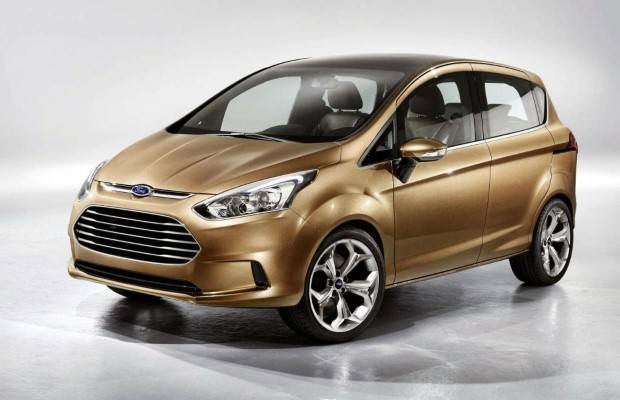
Small is beautiful – and frugal – according to Ford, and their new-for-2012 B-MAX mini-mpv is set to be powered by an “innovative” 3-cylinder, 1-litre petrol engine, that Ford says will deliver 4-cylinder-like performance but with even greater fuel economy.
Sounds good.
We’ve already seen twin- and 3-cylinder engines in the Fiat 500 TwinAir and Citroen C1 and Peugeot 107; engines that have already veered away from the usual 4-cylinder, small capacity norm, and with their own endearing torque delivery and soundtrack characteristics.
The Fiat TwinAir parallel twin displaces 875cc; produces 85bhp and emits just 95g/km of CO2; outperforming even the flower-friendly Citroen / Peugeot 1-litre, 3-cylinder motor that makes 68bhp and releases 103g/km of CO2.
But it’s not just about trimming the cylinder sizes down to the super-slender; there’s a whole lot more eco-tech on top of that, and Ford seem to have had their (green) thinking caps on, over at their Dunton Technical Centre, here in the UK.
While mpg and CO2 figures for their new 3-cylinder motor – the smallest they’ve ever built – have yet to be confirmed, Ford has made some of their eco-tech known, and for any eco-tech-heads out there it makes quite interesting reading.
Ford’s Joe Bakaj, vice president of Global Powertrain Engineering, had this to say about their new 3-pot: “No one has ever built a 3-cylinder engine quite like this. It’s one of the most technically advanced and efficient engines we’ve ever designed,” says Bakaj. “The new engine introduces many new technologies that could be part of the DNA of future Ford engines.”
So what’s in it? Well, there’s an offset crankshaft that reduces internal friction; a big sapper of efficiency, and a new, Ford-designed split cooling system that allows the cylinder block to warm up before the cylinder head – faster cylinder block warm-ups save fuel, especially in cold weather.
Also, the exhaust manifold will be cast into the cylinder head, with the one-piece assembly lowering the temperature of the exhaust gases, which enables the engine to run in a wider rpm band with the optimum fuel-to-air ratio. And, more familiar Ford EcoBoost technologies, such as turbocharging, direct-injection and twin independent variable camshaft timing (Ti-VCT) will be on hand to add a little performance punch to their new little nipper.
And having driven the latest generation of turbocharged EcoBoost engines in the all-new Focus and revised Mondeo, we have to say that Ford’s turbocharging homework is paying off, with forced induction engines that give you extra – and smooth – torque when you need whilst keeping the fuel-sips small when you don’t.
Petrol turbocharging, once rather inefficient but exciting, is now catching up with diesel turbocharging; and while we might be loosing out on the power-slam of big – but thirsty – old school petrol turbocharging, we’re starting to see more frugal performers that manage to marry smaller capacity engines and smaller, quick-spooling turbos to deliver that precious mpg and a little smile-widening turbo-shove.
“Drivers are going to like the new 1.0-litre EcoBoost because it delivers great low-speed responsiveness, power, torque and smoothness,” adds Bakaj.
The new engine has already been confirmed for the new Ford B-MAX, which goes on sale in the UK during 2012, and is also destined for global applications in a number of Ford’s other small cars. We’ll be seeing more details on the new and smallest EcoBoost family member at the Frankfurt Motorshow, this September.
Article courtesy of totallymotor.co.uk

